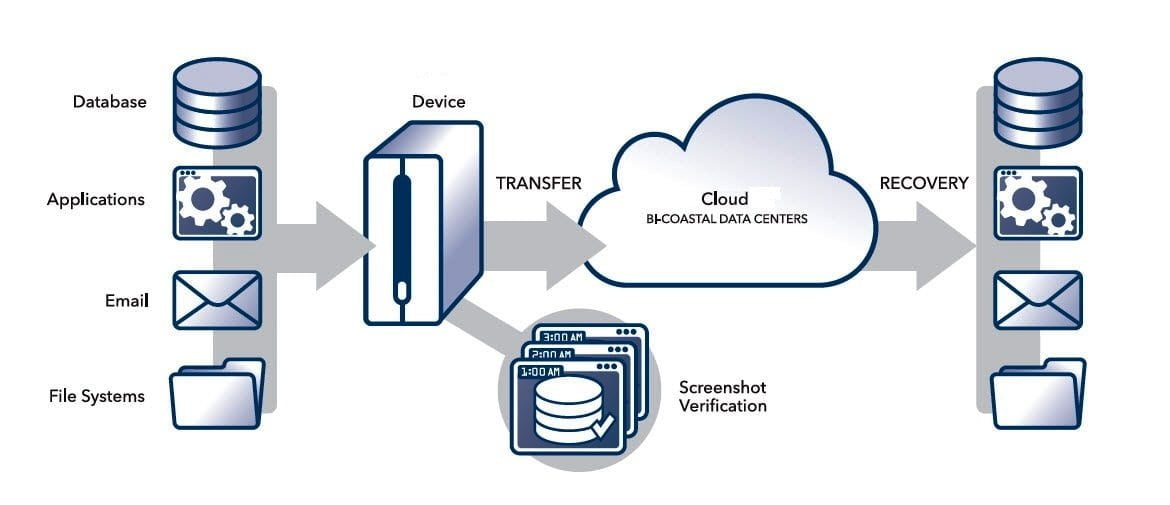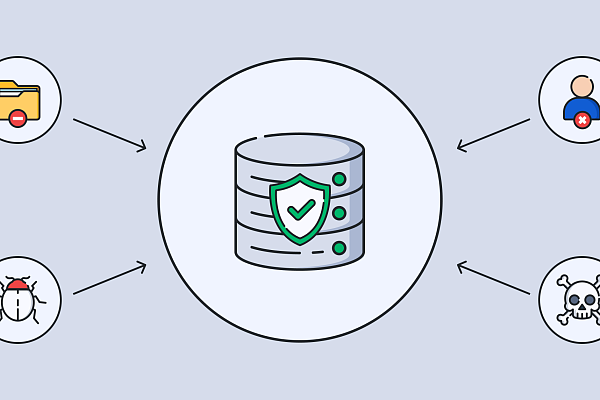In 2014, SaaS provider Code Spaces suffered a catastrophic cyber attack that led to its sudden collapse. Attackers hacked into the cloud control panel, deleted critical data and held it for ransom. The incident exposed serious weaknesses: backups were stored on the same infrastructure as primary data, making it impossible to recover from the hack, and the lack of a geographically separate disaster recovery plan meant there was no guarantee of recovery. As a result, Code Spaces was eventually shut down within a few days.
This case serves as a reminder that integrating secure offsite backup and comprehensive disaster recovery strategies is critical to countering threats. This article looks at what backup and disaster recovery are and why it is better to combine them into one solution.
What Is Cloud Backup?
Cloud backup is a service that securely copies and stores your physical or virtual server data in remote cloud storage. Think of it as a safeguard against hardware crashes, cyberattacks, or unexpected events that could compromise your files.
Your data is stored in highly secure, certified facilities designed for privacy and reliability. The process starts with a full initial backup, which might take hours or days depending on your data size. After that, only changes made since the last backup are updated automatically, saving time and resources.
If disaster strikes, you can manually restore your data to its state at the time of the most recent backup.
What Is Disaster Recovery?
Disaster recovery (DR) is a service focused on quickly restoring critical systems and data after major IT disruptions. It is essential when downtime could cripple operations — like after cyberattacks, natural disasters, or system failures. This service is a core part of a business continuity plan, ensuring companies can bounce back fast.
How does disaster recovery work? DR creates a mirror of your IT infrastructure in the cloud, including servers and data. If your primary systems go down, this backup infrastructure takes over immediately, minimizing downtime.
Two key metrics determine its effectiveness:
- RPO (Recovery Point Objective): The maximum “age” of data you can tolerate losing (e.g., recovering data from 1 hour ago vs. 24 hours ago).
- RTO (Recovery Time Objective): The maximum acceptable time to restore operations. For example, mission-critical systems might need an RTO of minutes, while less urgent ones could take hours.
Cloud Backup vs. Disaster Recovery: What is the difference?

While both protect data, they serve different roles:
Cloud Backup
- Focus: Backs up data only on a set schedule.
- Recovery: Manual process to restore files after loss.
- Use Case: Ideal for safeguarding against accidental deletions or minor outages.
Disaster Recovery
- Focus: Replicates entire IT systems in real time.
- Recovery: Automatic failover to backup systems during major disasters.
- Use Case: Critical for maintaining operations during severe disruptions.
Benefits of a combined solution
The primary goal of Backup-as-a-Service (BaaS) and Disaster Recovery-as-a-Service (DRaaS) is to minimize downtime and protect sensitive data. Combining both initiatives into a single solution helps organizations achieve this goal by providing a number of key benefits compared to supporting each separately.
Reduced complexity
Implementing separate solutions for each function creates a confusing environment that is difficult to manage and almost impossible to protect. Each additional vendor/tool/application increases the risk of attack by creating new vulnerabilities.
Efficiency and reliability
Cloud-based backup and disaster recovery solutions use state-of-the-art technology and geographically dispersed data centers to provide high levels of redundancy and availability.
Improved RTO and RPO metrics
The continuity provided by a combined BaaS/DRaaS solution helps you meet your RTO and RPO objectives.
Improved security
Cloud backup and disaster recovery solutions are protected by state-of-the-art security technologies at all levels – from the environment and physical perimeter to the data and infrastructure layers.
Easy scalability
Combining backup and disaster recovery in a single solution means you will always have the optimal amount of resources available. As your needs change, you can easily scale up or down to meet demand.
Reduced costs
Cloud backup and disaster recovery reduces costs associated with storage, hardware and software maintenance. A unified strategy also frees up IT staff to work on business development initiatives.
Adapting to the ever-changing threat landscape is a constant process. Cloud4U keeps pace with the times and offers advanced cloud backup and disaster recovery services that meet the needs of today's businesses. Together, BaaS/DRaaS are your best defense against the unexpected.



